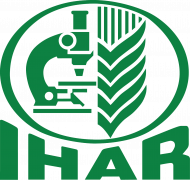Abstract
Climate change is a threat to agriculture but also presents opportunities and requires adaptation strategies. In many countries adequate meteorological data is lacking, so this is where NASA weather data are of assistance. We aimed to develop a generic and easily applicable approach to calculate the effect of climate change on potato yields and water need. We therefore used the NASA-Langley-Gaisma weather database which has data of thousands of sites worldwide. Comparing these with national data of a particular country, Turkey in this case showed that they compare well but diverge somewhat at the lower temperature range. The evapotranspiration (ETP) rate was not supplied by NASA, so we estimated this rate by multiplying the average daily radiation in MJ/m2 by 5. There was a good correlation with actual ETP, and where there is a systematic deviation, it will not change conclusions when comparing sites and climate change scenarios. Next, it was assumed that potato crops are planted in spring when the average daily temperature is above 13 °C. When the average daily temperature reaches 22 °C and above, it is assumed that the crop is harvested as it gets too hot. For the highland sites with summer crops, this gave planting and harvest dates that reflect reality, but for the coastal sites, the time window with this method was too short. Since there is no risk of frost, farmers plant at lower temperatures, in local niches not covered by the regional met stations. The effect of climate change, higher temperatures, shifting planting dates and a CO2 induced increased growth rate on yield and water need of the crops was well explored with the LINTUL crop growth model. At unchanged rates of incident solar radiation and unchanged planting dates, an average decrease in potential yield from 94 to 83 t/ha is calculated. Extention of summer by 20 days on average causes decrease in the frost-free period, which leads to an overall increase of potential yield of the highland summer crops by 3%. The length of the growing season of the coastal spring crops is not extended; the season just moves closer to the winter with shorter day lengths and less radiation. So here yields are not affected by adverse high temperatures but are reduced by lower radiation levels. For both highland summer and coastal spring crops, an increase in the CO2 concentration of the atmosphere from the current 415 to future level of around 550 ppm is expected to increase the radiation use efficiency, so also yields by 25%.















